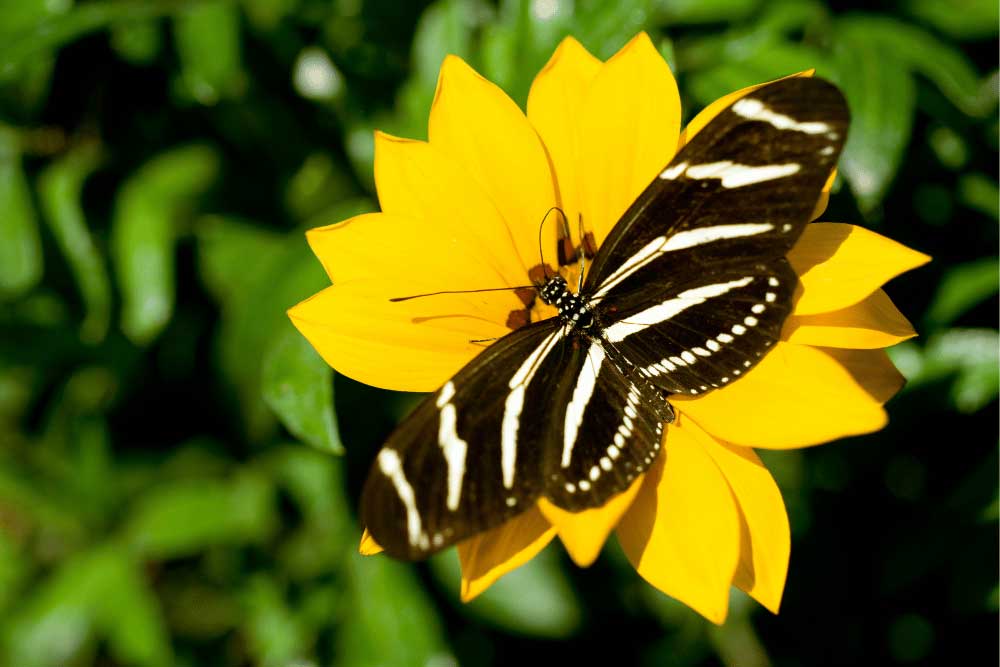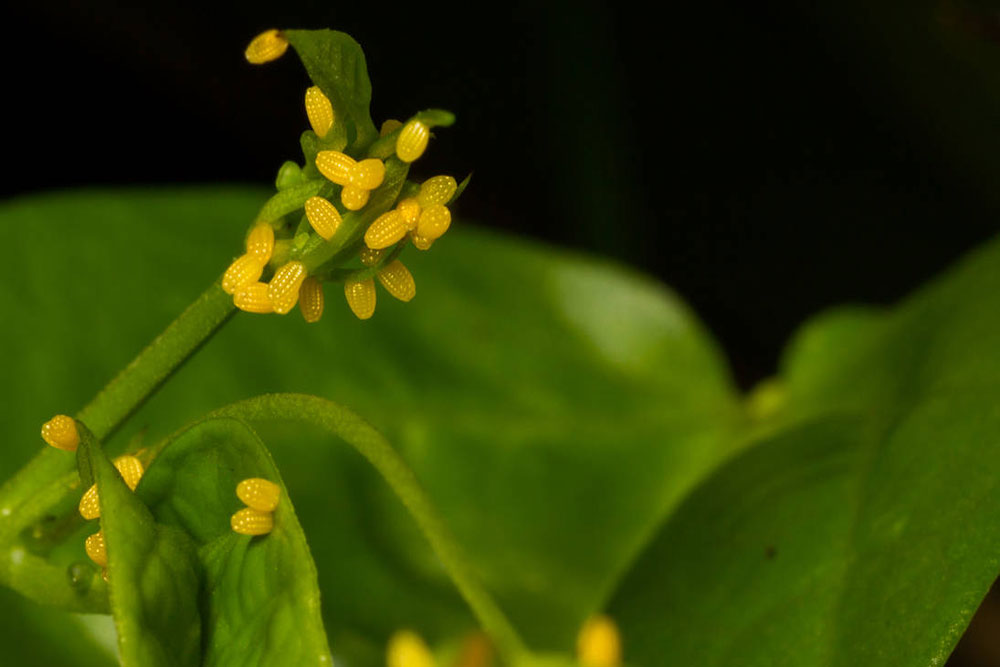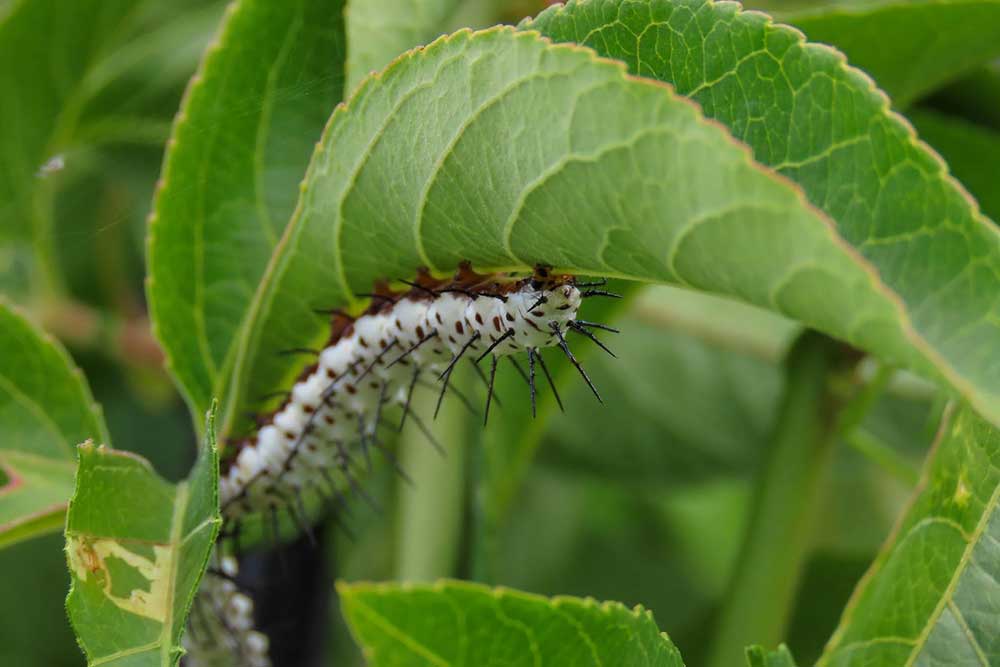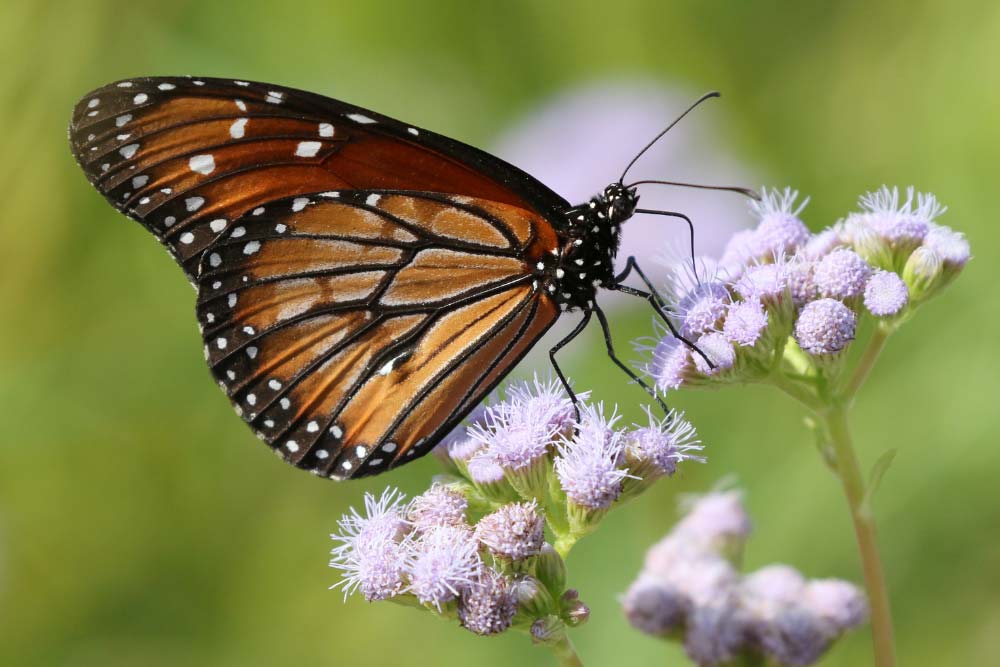
Scientific Name
Heliconius charithonia
Average Life Span
Five to six months
Wingspan
3 - 3½ inches (7.4 - 8.9 cm)
Heliconius charithonia, commonly known as the zebra longwing or zebra heliconian, is a butterfly species from the subfamily Heliconiinae of the Nymphalidae family.
During the year, the zebra longwing produces multiple generations. They fly leisurely and unhurriedly through their surroundings. Females delicately lay little, golden eggs on host plants’ tender new growth, either individually or in groups.
Adult zebra longwing butterflies have a diet that includes both flower nectar and pollen. The pollen, which is high in nutrients, increases their longevity to several months, in stark contrast to the typical two- to four-week duration observed in most butterfly species. During the night, they usually seek safety in communal roosts with other zebra longwing butterflies.
Classification
Family: Nymphalidae
Subfamily:
Tribe:
Genus: Heliconius
Species: H. charithonia (Synonyms: Papilio charithonia, Heliconius charithonius, Apostraphia charithonia)
NATIVE RANGE
Zebra Longwings are prevalent throughout Mexico and Central America, as well as in the majority of Florida and certain portions of Texas, where they can be observed all year.
Host Plants
The zebra longwing butterfly’s host plants include purple passionflower (Passiflora incarnata L.), corkystem passionflower (Passiflora suberosa L.), yellow passionflower (Passiflora lutea L.), and a variety of passionflower vines. These vines carry a toxin that the caterpillars ingest, making the adults poisonous to predators.
NECTAR PLANTS
The zebra longwing butterfly feeds on a wide variety of flowers; some of their favorites are lantana (Lantana, Verbenaceae family) and shepherd’s needle (Bidens pilosa, Asteraceae family).

Eggs
The zebra longwing butterfly typically lays her eggs in clusters on the tender newly grown leaves of passionflower vines. The eggs are yellow in color and if you look closely they almost look like little corn cobs.

Caterpillar
The zebra longwing caterpillars are white bodied with black spots and black spikes.

Chrysalis
The zebra longwing chrysalis can resemble a cross between a dead leaf so a little bat creature because it looks like it has two ears that hang down. The chrysalis is also adorned with a few shiny silver markings as well as short dark bristles.


